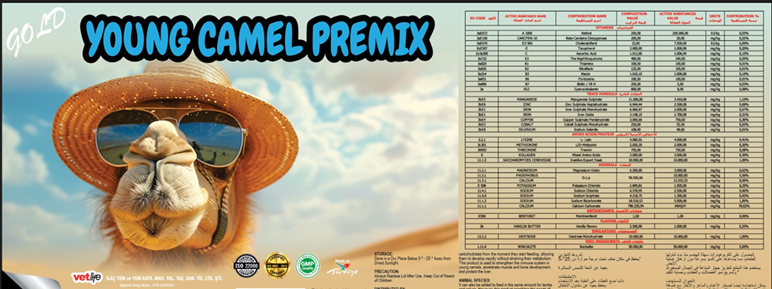GOLD YOUNG CAMEL PREMIX
Gold YOUNG CAMEL Premix is designed for the development of camel calves (young camels) from birth until puberty, a period during which their digestive systems, liver functions, and bone development are quite different from those of adult camels. Even though the calves start nursing right from birth, they also begin showing interest in feedstuffs. Vitamins AD3E and B-complex, without burdening the liver, will accelerate and support the organism’s development and immune system. Trace minerals and essential minerals will particularly support growth and development in calves. As with adult camels, maintaining electrolyte balance is crucial, especially in traveling groups of calves. Therefore, this premix, prepared based on academic research, will significantly contribute to the growth of the young camels. As calves approach weaning and start to adapt to feedstuffs, their muscle and bone development, along with protein and carbohydrate metabolism, will accelerate. From this point onward, the Gold Young Premix, with its easily digestible carbohydrates, will provide rapid results in the growth and development of camel calves.
The Gold Premix range is produced to meet the needs of high-yield animal breeds for vitamins, minerals, and amino acid components. For animals known as culture breeds, natural nutrition may not be sufficient to achieve desired productivity; hence, high-energy and high-protein concentrate feeds are preferred. Achieving the targeted productivity of these feeds relies on the presence of components in the digestive system, including enzymes and hormones, as well as in meat, milk, offspring, wool, or hair structure. Gold premixes, when used with a good feed ration, are products that provide all the necessary vitamins, minerals, and amino acids according to the desired productivity. Vitamins and trace minerals, which are effective in enzyme and hormone structures, are carefully selected and included in the composition based on academic information. These products, used for many years, are continuously developed in light of new scientific advancements.


